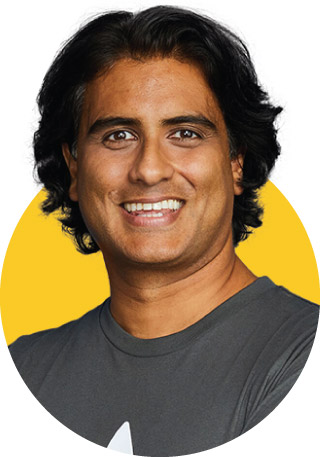The days of “hero leadership,” when functions were led by one person who primarily directed the group by gut instinct, are behind us. (Thankfully, some might say.) In place of this archaic paradigm, a team-based model has become the primary way for marketing groups to adapt to today’s constantly shifting landscape.
We discussed the complicated task of building successful teams at our fifth annual West Coast CMO Summit, where three speakers with extensive marketing and team experience spoke to a crowd at San Francisco’s Autodesk Gallery: Robert Chatwani, CMO at Atlassian; Vineet Mehra, former executive vice president and CMO at Ancestry and current global CMO at Walgreens Boots Alliance; and Deborah Yeh, senior vice president of marketing and brand at Sephora.
But creating — and leading — highly functioning teams is no small task: it requires the ability to manage group dynamics, align the group’s culture with the organization’s strategy, and incorporate diverse perspectives, among other things.
The group talked about their own team-related experiences, the importance of transparency and how a “smoky eye” helps a team succeed. Here are some of the key takeaways from the discussion.
ABC: Always be connecting
The evening began with Spencer Stuart consultants discussing teamwork and the extent to which inter-organization collaboration has increased over the last decade. “Research has shown that the number of collaborative interactions in organizations has at least doubled — this means more Skype, more IMs, more Yammer, more conference calls."
According to the panel, this surge in communication only increases the importance of creating connections, both within the team and from the team to the rest of the organization. By forming these bonds, leaders can ensure the marketing function can work on relevant projects with other functions within the company.
“As a leader, you have an opportunity to connect your team's work to the rest of the organization and see the connections that others don’t because you just came from an executive meeting, and you know there’s relevance to what your team is working on,” Chatwani said. “I spend a lot of my time thinking about how we're on a flight path: Everyone has goals and objectives, but as the team leader, I need to make adjustments to that flight path based on all the things that are happening across our business.”
This idea sparked a response from Yeh, who said she saw her job as team leader as similar to being a matchmaker: because she saw the bigger picture, she was able to link team members with other people within the organization. “There are a lot of times when I’m like, ‘You know what? Go meet your auntie or uncle over there, because they are going to have a word about what you're trying to accomplish, and I think that maybe your cousin could help you out on this project,’” she said with a laugh. “So, based on the connections that we have across the enterprise, we're able to facilitate — or match-make — those relationships and put those people together.”
Make it personal
Our panelists agreed that, while technology makes it easy to create superficial relationships, there’s no substitute for personal connections with team members. This is a crucial way for leaders to ensure they stay engaged and have a sense for what’s really happening within the team.
 Chatwani said he surveys his team twice a year about personnel, culture, work and effective scaling. “That’s a rich repository of information that I can click down to see at the individual manager level — it’s stuff you want to hear, and stuff you don’t want to hear,” he said. The next step is even more intense: “I publish that feedback, except for the names, to the whole team. Including the feedback that I get. It’s an uncomfortable truth, but it's all out there, and that vulnerability creates an environment of trust that becomes a really powerful thing. It's remarkable what comes out of that.”
Chatwani said he surveys his team twice a year about personnel, culture, work and effective scaling. “That’s a rich repository of information that I can click down to see at the individual manager level — it’s stuff you want to hear, and stuff you don’t want to hear,” he said. The next step is even more intense: “I publish that feedback, except for the names, to the whole team. Including the feedback that I get. It’s an uncomfortable truth, but it's all out there, and that vulnerability creates an environment of trust that becomes a really powerful thing. It's remarkable what comes out of that.”
 Mehra said he prefers a more informal, “old-school” approach: “For me, honestly, there’s nothing like just walking around, maybe taking long route back to my desk after a meeting. Or I’ll stop by after lunch, see how people are doing, or sit with them at the table in the cafeteria,” he said. “And I’m sure to do it in person — I mean, you can sense the energy in a room. You’ve got to be out there, you’ve got to be talking and listening, and just using your intuition, getting a pulse of the place.”
Mehra said he prefers a more informal, “old-school” approach: “For me, honestly, there’s nothing like just walking around, maybe taking long route back to my desk after a meeting. Or I’ll stop by after lunch, see how people are doing, or sit with them at the table in the cafeteria,” he said. “And I’m sure to do it in person — I mean, you can sense the energy in a room. You’ve got to be out there, you’ve got to be talking and listening, and just using your intuition, getting a pulse of the place.”
 For Yeh, the personal touch is an absolutely essential part of her team and her leadership style. “One benefit of being in retail is we have physical stores,” she said. “So we will get in an airplane — or a helicopter in some cases — and actually do a visit and talk to people who work at the store. We’ll say, ‘How did your Black Friday promotion go?’ or ‘How does this new leadership structure work for you?’ So you end up getting exposed to a lot of different things, both through the lens of the customer but also through your colleagues. It’s old fashioned, but it works.”
For Yeh, the personal touch is an absolutely essential part of her team and her leadership style. “One benefit of being in retail is we have physical stores,” she said. “So we will get in an airplane — or a helicopter in some cases — and actually do a visit and talk to people who work at the store. We’ll say, ‘How did your Black Friday promotion go?’ or ‘How does this new leadership structure work for you?’ So you end up getting exposed to a lot of different things, both through the lens of the customer but also through your colleagues. It’s old fashioned, but it works.”
Character counts
When assembling a team, it’s crucial to have enthusiastic members who will fully participate in the team’s goals. It’s also crucial that a team has a wide array of voices, so diversity is key.
 Chatwani said the first criteria he looks for in an interview is character, not ability. “If we’re having a conversation, most likely we can check the box on competence, right? Because you achieve a certain level of credibility just by being in the interview or in the discussion. But we've also introduced some parameters for character and energy in the interview process. That way, when you have a team that intersects on the right character and energy, there's a sense of shared purpose and shared values that's just intrinsic.”
Chatwani said the first criteria he looks for in an interview is character, not ability. “If we’re having a conversation, most likely we can check the box on competence, right? Because you achieve a certain level of credibility just by being in the interview or in the discussion. But we've also introduced some parameters for character and energy in the interview process. That way, when you have a team that intersects on the right character and energy, there's a sense of shared purpose and shared values that's just intrinsic.”
 Mehra said he looks for diversity as well as character, thereby ensuring his team represents the people buying his product. “I'm talking gender, sexuality, ethnicity, style — I'm talking any kind of diversity,” he said. “We are consciously trying to build the most diverse teams possible, because more and more that does represent what we’re seeing in our customer base.”
Mehra said he looks for diversity as well as character, thereby ensuring his team represents the people buying his product. “I'm talking gender, sexuality, ethnicity, style — I'm talking any kind of diversity,” he said. “We are consciously trying to build the most diverse teams possible, because more and more that does represent what we’re seeing in our customer base.”
 Yeh said that, when she is evaluating personnel, she keeps an eye on development and future growth within roles. “We think about chemistry with the rest of the group, and how do you supplement the diversity and perspective, but I also look at: Can I see this person actually playing this role now, as well as whatever it becomes later?” she said. “Because I don't know what this position is going to become, but we know it's going to be different two or three years from now. And we have to take the person’s skill set, and their ability to evolve that skill set, into account, as well.”
Yeh said that, when she is evaluating personnel, she keeps an eye on development and future growth within roles. “We think about chemistry with the rest of the group, and how do you supplement the diversity and perspective, but I also look at: Can I see this person actually playing this role now, as well as whatever it becomes later?” she said. “Because I don't know what this position is going to become, but we know it's going to be different two or three years from now. And we have to take the person’s skill set, and their ability to evolve that skill set, into account, as well.”
Every CMO tells a story
The group agreed that data and analytics have become increasingly important in today’s digital environment. However, the concept of aligning a team around a personal narrative is also key. “Storytelling has always been at the core of what marketing does,” Mehra said. “That’s become a rallying cry around our company, something we call ‘marketing with a purpose.’ It’s literally a narrative around the purpose that our brand and our work bring to the world. I think storytelling is not just for the customer or the consumer — ¬more and more, it's got to become the way we lead organizations.”
Yeh noted that the customer’s journey is the basis for her business, so it’s essential that members of her team personally experience it. “We take it a step further, so that every new senior leader has to spend time in the stores, behind the counter,” she said. “We go as far as, when we're onboarding people, we make sure they know how to match a foundation and do a ‘smoky eye.’ It doesn't matter who you are. I've seen senior executives try their hand at it, and it’s funny, but it's the tactile process of actually feeling your business. And that keeps you hungry, and it keeps you connected to the consumer path, whatever you're delivering.”
At the evening’s close, Deb Op den Kamp, a consultant in Spencer Stuart’s Marketing Officer Practice, summarized key findings from the discussion and recommended that leaders “think about co-creation as a way to inspire your teams to interact with change.” It’s up to team leaders to inspire employees and help them find a higher purpose in their work, she said, “because everybody wants to be a part of something greater than themselves.” As she noted, it’s difficult for leaders to manage an efficient, smoothly functioning team while also running the marketing function, but these days, it’s more important than ever.
Visit our CMO Summit page for highlights from previous discussions.